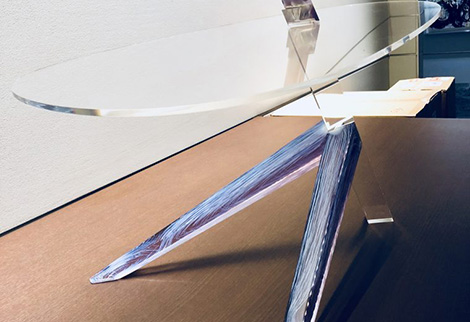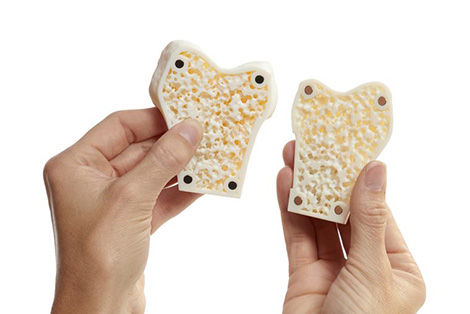
The whispy internal leg details of this table were produced by controlling the voxels of the print with GrabCAD
By combining GrabCAD Voxel Print and its J750 3D printing solution, Stratasys hopes that it has unlocked a new era of control at microscopic detail within its 3D printed parts.
Voxels, a term for a 3D pixel, form the building blocks of the company’s high-resolution ink-jet deposited PolyJet 3D printing, enabling users to create advanced structures, gradient color patterns, internal properties, textures and precise material requirements for various applications.
Users can use their own model layer slicer tool to assign properties at the voxel level, slice by slice, creating the ability to go beyond boundary representation to volumetric modelling, before GrabCAD Voxel Print generates a GrabCAD Voxel File (.GCVF) that can be directly loaded to GrabCAD and fabricated on a Stratasys J750 3D Printer.

Highly details internal textures and structures created using voxel manipulation
Although the software is some way from transforming the traditional CAD tools and means of 3D design, it does offer up some exciting prospects as it stands.
The software has increased the realism and accuracy of the J750 3D printer’s colour output; added the ability to accurately transition lattices through various shore hardness (as part of a University of Lancaster project), and has created some striking visual effects through the multi-material abilities of the printer.
“GrabCAD Voxel Print is a game-changing production technology. For us it’s driving inquiry into new design automation approaches that span and integrate architectural, industrial and engineering design,” said Martin Dunn, associate provost for research and co-director, Digital Manufacturing and Design Center, Singapore University of Technology and Design.
“This is leading to new ways to conceive and create products that blur the traditional line between material and structure and traditional boundaries between the digital and physical world.”
GrabCAD Voxel Print is immediately available for use with the Stratasys J750 and GrabCAD Print.






